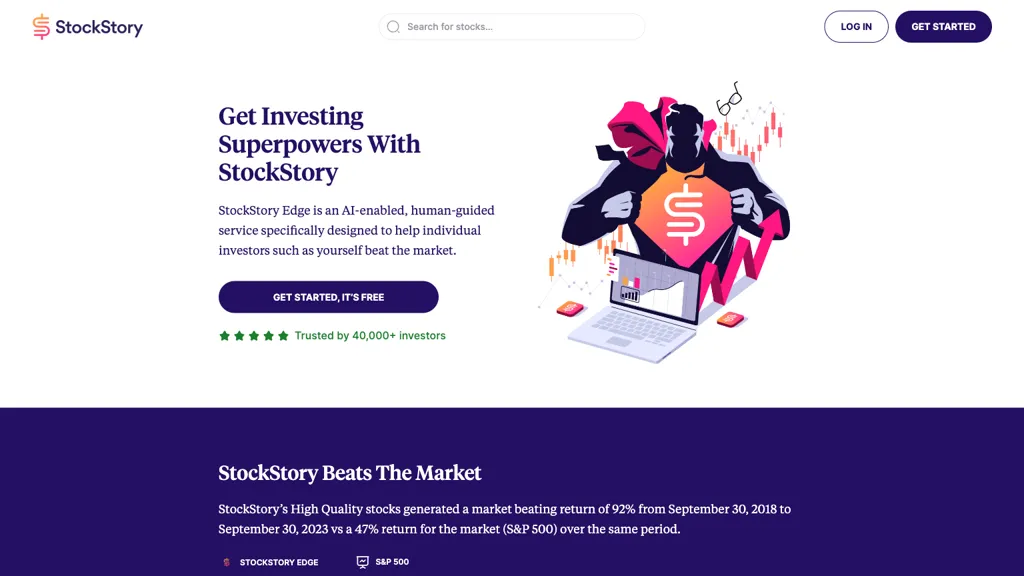20 New Reasons For Selecting AI Stock Trading Platform Websites
20 New Reasons For Selecting AI Stock Trading Platform Websites
Blog Article
Top 10 Tips On Assessing The Security And Privacy Of Ai Analysis And Stock Prediction Platforms
The privacy and security of trading platforms based on AI are crucial, as they handle financial and personal data. A breach or misuse of data can lead to significant financial losses and reputational damage. Here are 10 tips on how you can evaluate the privacy and security features of these platforms.
1. Examine Data Encryption
Security during transport: Make sure that your platform is using secured protocols, like TLS/SSL to encrypt all data that is sent between the servers of your device and those of theirs.
Verify encryption at the time of rest. Check to see if sensitive information is encrypted on the server platform, using secure encryption standards (e.g. AES-128).
Check for end-toend security: This is a must if you want to protect sensitive data or communications.
2. Review Authentication Mechanisms
Two-factor verification (copyright) Make sure whether the platform works with copyright for an added layer of protection.
Review the biometric authentication options for mobile applications (e.g. facial recognition or fingerprint).
Password policies: Check that the platform is able to enforce strict password policies (e.g., minimum length, requirements for complexity).
3. Examine for Compliance
Financial regulations: Make sure the platform is compliant with pertinent financial laws (e.g., SEC, FINRA, MiFID II).
Data protection laws. Verify compliance with the privacy laws for your area (e.g. CCPA, GDPR) If applicable.
Audit certifications. Check whether the platform has passed security third-party tests or has been accredited (e.g. SOC 2 and ISO 27001).
Review Data Access Controls
Role based access: Use role-based accessibility controls to limit access to data to only authorized users.
Permission levels: Verify whether you are able to assign granular permissions to different users or team members.
Activity monitoring: Make sure that the platform records and monitors every user's activity for any suspicious activity.
5. Evaluate Vulnerability and Manage
Regular updates: Ensure the platform regularly updates its software to patch weaknesses.
Penetration test: Check if your platform is regularly tested to detect and fix any security vulnerabilities.
Check whether the platform offers bugs bounty programs to encourage researchers to find vulnerabilities.
6. Evaluate Data Privacy Policies
Transparency - Review the privacy policies of the platform in order to know how data is collected, shared, and utilized.
Data reduction: Only collect information that is necessary for the platform's function.
Third-party sharing: Check if the platform shares its data with third-party providers and, if so, under what terms.
7. Verify Secure API Utilization
API security: Ensure that the platform's API utilizes secured authentication (e.g. OAuth, API Keys) and encrypts every data exchange.
Rate-limiting: Check if the API has a rate limit to avoid abuse and brute-force attacks.
Access logs: See whether the platform records API access and use for monitoring and auditing.
8. Assess the Recovery of Incidents and Response
Incident response plan - Ensure that your platform is armed with a procedure to deal with data breaches and other security incidents.
Notification policies: Verify whether the platform informs users quickly in the event of a security incident.
Backups of data: Determine if the platform regularly backs up data and has a disaster recovery plan in place.
9. Review Physical Security Measures
Data center Security: Ensure that servers are located in secured data centers that have physical security measures in place (e.g., monitoring, access control).
Redundancy: Determine that the platform is protected by redundant systems in order to guarantee data availability in case an hardware failure.
Verify the geographical distribution of the data to ensure its resilience.
10. Test privacy controls for user testing
Data deletion: Check that the platform will allow you to permanently erase your data when you stop using the services.
Privacy settings: Verify whether the platform has privacy settings to limit what data is shared or visible.
Check the anonymization of data for analytics and machine learning.
Bonus Tips:
Feedback from users and reputation Review feedback and reviews from users in order to gauge the platform's record regarding security and privacy.
Trial period - You can use the trial or demo version of the software to test its security features and privacy controls.
Support for customers: Ensure that the platform provides robust customer support for security-related issues or concerns.
These guidelines will allow you to assess the security and privacy of AI trading platforms that predict/analyze stock prices. Your financial and personal information will be secure. A secure trading platform is not only a method to safeguard your assets, it also builds confidence and trust. See the most popular best ai for trading url for site tips including using ai to trade stocks, best ai stock, chatgpt copyright, investment ai, ai for stock predictions, ai for stock trading, best ai stock trading bot free, ai trade, ai chart analysis, ai investing and more.
Top 10 Suggestions For Evaluating The Scalability Ai Trading Platforms
To make sure that AI-driven prediction and trading platforms can cope with the ever-growing amount of data, user requests, and market complexity, it is vital to determine their scalability. Here are the top 10 suggestions on how to evaluate the scalability.
1. Evaluate Data Handling Capacity
Tips: Determine whether the platform is able to process and analyze large datasets.
What is the reason? Scalable platforms should be able to handle increasing amounts of data with no degradation.
2. Real-time testing of processing capabilities
See how the platform handles real-time data streams, such as stock prices and breaking news.
What is the reason? Analyzing in real-time is crucial in trading decisions, and delays could result in missed opportunities.
3. Cloud Infrastructure and Elasticity Cloud Infrastructure and Elasticity: Take a look
Tips: Make sure that your platform is cloud-based (e.g. AWS, Google Cloud or Azure) and has the ability to dynamically scale resources.
Why: Cloud platforms are elastic and can be scalable up or down according to demand.
4. Evaluate Algorithm Efficiency
Tips: Examine the computational efficiency and accuracy of AI models for prediction.
The reason: Complex algorithms can be resource intensive So optimizing these algorithms is crucial to scalability.
5. Learn more about Parallel Processing and Distributed Computer Systems.
Make sure the platform is using parallel computing or distributed computing frameworks.
What is the reason? They can help speed data processing across several nodes.
Review API Integration.
Tip: Test the platform's ability to integrate with external APIs (e.g. market data providers, brokerage APIs).
The reason: seamless platform integration makes sure it is able to adapt to new sources of data or trading environments.
7. Analyze User Load Handling
Tip: Simulate the impact of high user traffic to test how the platform performs under stress.
What is the reason: A platform that is scalable should be able to keep up with its performance as the number of users increase.
8. Assess the effectiveness of Model Retraining and Adaptability
Tips - Check how often the AI model is trained and with what degree of efficiency.
Why? Markets are constantly changing, and models have to adapt quickly in order to remain precise.
9. Verify Fault Tolerance and Redundancy
Tips. Make sure your platform is equipped with failover systems and redundancy for hardware orsoftware failures.
Why: Downtime is costly for trading. Therefore, fault tolerance is vital to scaling.
10. Monitor Cost Efficiency
Review the costs associated with your platform, including the cloud resources, storage and computation power.
Why: The cost of scaling should not be too high. Therefore, it is important to balance performance with expense.
Bonus Tip Future-Proofing
Make sure the platform supports the latest technology (e.g. quantum computing and advanced NLP) and is able to adapt to changes in the regulatory environment.
Focusing on these aspects will help you evaluate the scalability AI stock prediction and trading platform, and ensure that they are sturdy effective, efficient and capable of sustaining future expansion. Follow the recommended ai investment tools for site recommendations including stocks ai, free ai tool for stock market india, stock predictor, ai stock prediction, trading ai tool, best ai for stock trading, ai share trading, ai stock analysis, ai in stock market, ai in stock market and more.